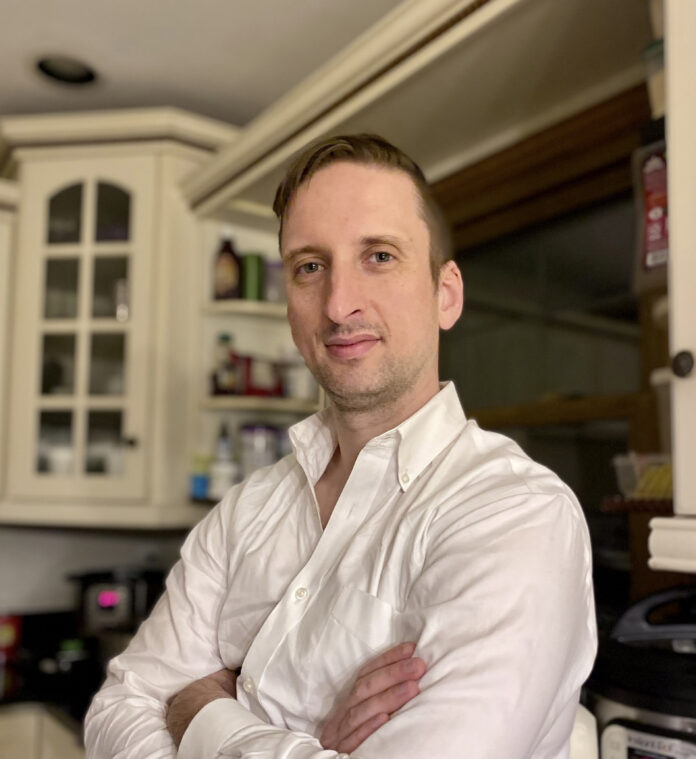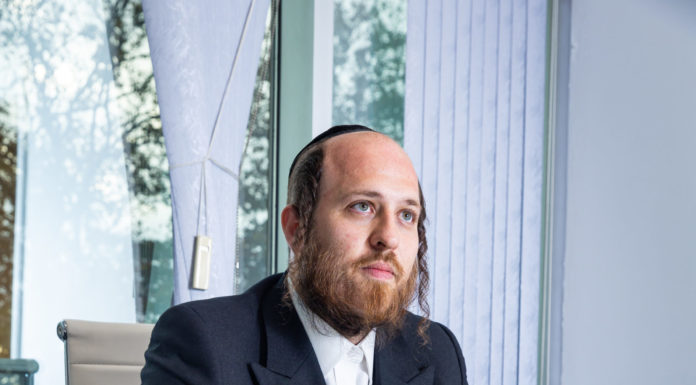One of the goals I have in this column is to introduce a wide array of businesses to the readership. When I had the chance to speak to Chaim Kay about his business producing Black & Decker licensed pest control products, I realized that I had never spoken to someone who built a company by licensing a brand name.
“Licensing” is defined as “a business arrangement in which one company gives another company permission to manufacture its product for a specified payment.” In Chaim’s case, he produces a wide range of pest control products under the Black & Decker brand name, including bug zappers and insect traps.
Once we started talking, however, I discovered Chaim has a life story that can fill a book—one filled with tragedy at a young age, business troubles at the peak of his career, and starting over. While you will learn about the licensing business, you will also perhaps learn a bit about moving forward despite difficult circumstances. Keep on keeping on.
—Nesanel
I grew up in Moscow, Russia. My father worked as a driver. Before that, he was a stunt driver in the car industry, testing new cars and doing stunts for films. My mother was an engineer. She also worked as a French translator; she had a master’s in French, and her specialty was in technical translation.
“We did not keep any of the Jewish festivals or traditions. I didn’t even know I was Jewish until the age of 12. When I found out, I told all of my friends—and got punched in the face. After that, I figured it would be best to not tell people about it.
“I was an only child, and sadly both my parents passed away when I was very young; they both had cancer. In the two years before my mother passed away I barely saw her, as she was in and out of hospitals all the time. A year after my mother got sick, my father was diagnosed; he passed away pretty quickly. My mother was only 33 years old when she passed away, right before my bar mitzvah. I was raised by my maternal grandfather, as my grandmother had also already passed away.
“I was very close to my grandfather. He was such a great man—you could write a whole article about him—but living with him was hard. He’d had a rough life himself. He had to work night shifts to support the family and I was left alone. It wasn’t a picnic. He passed away a few years ago. He later remarried, and his second wife is still alive and living in Moscow. We’re very close.
“In the summertime, I went to a Zionist camp. These camps were established in Russia when the Iron Curtain fell. They pumped us with pro-Israel ideology, telling us about the history, who we were, and why we should be proud of our identities. I loved it, as it was the only exposure I had to anything Jewish at the time.
“I also attended a Jewish school that opened the year after the Iron Curtain fell. The administrators called all the kids on the list of those who were signed up for the summer camp and offered them a place in the new school. They had excellent teachers and professors they poached from universities. That was very attractive for my grandfather, so he sent me there. It was a Jewish school, but it was secular. A one-hour mandatory class on Chumash was the extent of its religiosity.
“As a teenager in Russia at that time, you were either a gangster or an academic. You had to study a lot just to get by in school. There were no opportunities to be entrepreneurial.
“Oddly enough, I became frum through that school. As I mentioned, I essentially grew up alone. My grandfather was always out of the house, so I got into a lot of trouble. In the Jewish school, when you got into trouble, they would send you down to the first floor, which was technically a beis midrash, although it wasn’t used as one. There wasn’t too much religion in the school, but the beis midrash had a rabbi. I was sent there often, so naturally I became very close with the rabbi, Rabbi Kalev Krelin, and it was through him that I first really learned about Yiddishkeit.
“From there, I went to Toras Chaim, a yeshivah for baalei teshuvah in Moscow. It was founded by Rav Moshe Soloveitchik from Switzerland. It had an intense curriculum because they knew who they were dealing with. When I got there, I didn’t know the alef beis. Within about six months, I could read Hebrew and daven, and I was introduced to Gemara and Mishnah.
“It was an interesting experience because when I got there, I wasn’t religious yet. I still smoked on Shabbos and snuck out of yeshivah, but I was getting there, or at least trying to. I was only 15 at the time.
“Rabbi Krelin called me and told me he was opening a yeshivah high school in Copenhagen. I learned in Denmark for a year, along with other Russian kids, some of whom had moved to Germany but were looking for a Jewish education.
“When the summer came around, everyone went back home to Moscow or Munich. Since I was 17, I couldn’t go back to Russia or I would be drafted into the army. One of the Danish Jews offered to sponsor a ticket to Israel for me. I agreed, and he sent me and my friend to a yeshivah in Bnei Brak.
“When I got there, I thought I had landed on Mars. I thought everyone was crazy in the way that they dressed and acted. But the yeshivah, Marbeh Torah, was very nice. It was officially for American baalei teshuvah, so my friend and I didn’t exactly fit in, because we didn’t speak English or Hebrew. The rosh yeshivah, Rabbi Moshe Weissman, was very supportive and set us up with chavrusos for 16 hours a day. I was there for about a year, became fully frum and never looked back.
“I’ll share with you how I got my name. In my first yeshivah, when I was 15, we were learning the first mishnah in Bava Kama where it uses the words ‘sheyesh bo ruach chaim’ talking about how some damages are different because they have life to them. That was the first time I heard the name Chaim and I loved it. I told the rabbi that I would love to be called Chaim. He said I could, but I would have to have a bris. I agreed. Several other bachurim also chose names, and we all had our bris on the same day. In fact after I was finished, I was the sandek for another bachur right away.
“My experience in Eretz Yisrael was beautiful; I met people who were just filled with chesed. They were real, genuine people who were not affected by gashmiyus. I once went to a family who had no air conditioning in their entire house, except for a small fan, and they selflessly gave the fan to my friend and me when we were there.
“I left Israel when I was 19 and went to Denmark for the summer. I didn’t know what to do afterwards, so I called Rabbi Weissman for advice. He recommended that I go to America, and he sent me to Yeshivas Rabbeinu Chaim Berlin, where there was a program for French and Israeli bachurim; I guess I was Israeli enough for them. I came to America with $100 in my pocket. I was there for two and a half years. I only went to first seder, then to work, then to college, but everyone there gave me leeway because I was still figuring it all out.
To read more, subscribe to Ami





















